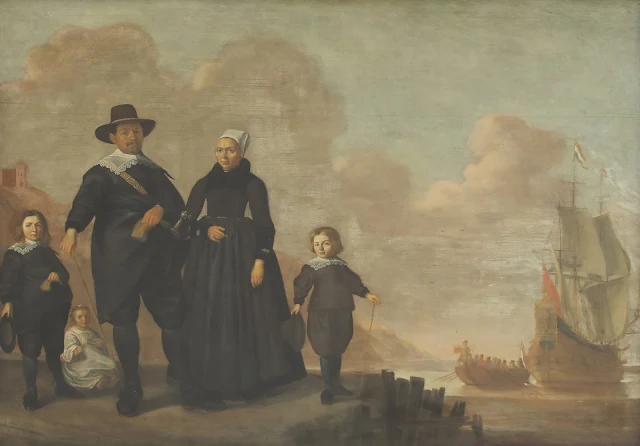Exploring the Beauty of 19th Century Dutch Art
The 19th-century Dutch art scene, often overshadowed by its 17th-century Golden Age counterpart, was a period of artistic transformation and innovation. Embracing Romanticism and Realism, Dutch artists departed from traditional styles to depict raw emotions, landscapes, and daily life. The luminous landscapes of the Hague School captured the changing countryside amidst urbanization. Genre painting unveiled the intricacies of ordinary life, reflecting societal shifts. Vincent van Gogh's profound impact on art emerged during this era, while a revival of craftsmanship and a tension between tradition and modernity shaped the artistic landscape. The 19th century marked a dynamic phase of artistic evolution, blending old and new and leaving an enduring mark on Dutch cultural heritage.
A Glimpse into a Golden Age
The 19th century was a period of profound artistic innovation and evolution in the Netherlands. Despite being overshadowed by the renowned Dutch Golden Age of the 17th century, this era brought forth a new wave of creativity, marking a significant transition from traditional styles to more modern expressions.
Dutch artists of the 19th century embraced the Romantic and Realist movements, seeking to capture emotion, nature, and daily life with heightened sensibility. These artists departed from the elaborate and symbolic works of the past, focusing instead on depicting reality as it was, often in a raw and unfiltered manner.
The Luminous Landscapes of the Hague School The Hague School emerged as a prominent group of artists who found inspiration in the Dutch countryside. Their landscapes were characterized by a unique interplay of light and atmosphere, showcasing the serene beauty of rural life and reflecting the era's rapid urbanization and industrialization.
Capturing the Intimate Realities of Everyday Life Genre painting gained prominence during this period, allowing artists to delve into the intricate details of ordinary life. Scenes of domesticity, work, and leisure provided a window into the lives of Dutch citizens, shedding light on their joys, struggles, and the evolving social dynamics of the time.
The Enduring Legacy of Vincent van Gogh One must discuss 19th-century Dutch art by mentioning Vincent van Gogh. Although he gained fame posthumously, his impact on art and culture is immeasurable. Van Gogh's expressive use of color and bold brushwork created emotionally charged paintings that captured the depths of human experience.
The Revival of Dutch Craftsmanship Amid the changing artistic landscape, some artists sought to revive the meticulous craftsmanship that characterized the Golden Age. This movement, known as the "Neo-Gothic" or "Neo-Renaissance," hearkened to earlier styles while incorporating contemporary elements, resulting in a fascinating blend of tradition and innovation.
From Tradition to Modernity The 19th-century Dutch art scene was a transitional period marked by a tension between preserving artistic heritage and embracing modernity. While some artists clung to tradition, others boldly ventured into new creative territories, setting the stage for the dynamic and diverse art world of the 20th century.
A Dynamic Era of Artistic Evolution The 19th-century Dutch art scene is a testament to artistic expression's resilience and adaptability. It witnessed a fusion of Romanticism, Realism, and the preservation of tradition, all while capturing the Netherlands' changing social and cultural landscapes. From luminous landscapes to intimate scenes of daily life, this era showcases the diversity and richness of Dutch artistic heritage, leaving an indelible mark on the art world.
JR █







Comments
Post a Comment